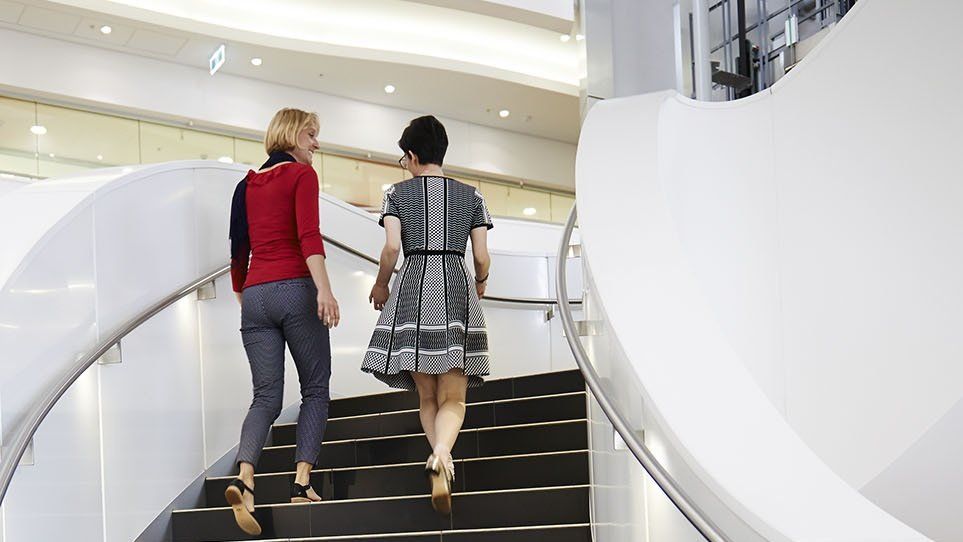Health Impact
Why are buildings important for physical activity and health?
Authors: Professor Billie Giles-Corti, Dr Sarah Foster, Dr Nyssa Hadgraft, Dr Lucy Gunn, Julianna Rozek.
Most adults and children spend the vast majority of their day in and around buildings. [1] The location of buildings, as well as their external and internal design can encourage or constrain physical activity and social interactions. A substantial body of evidence now indicates that physical activity is increased through interventions aimed at changing the internal and external design and amenities of buildings, such as [2]:
- Location and external design of buildings including promoting natural surveillance.
- Internal design, decoration and aesthetic qualities
- Signage and point-of-decision prompts (artwork, floor coverings) that encourage walking and stair usage
- Aesthetically pleasing staircases
- The provision of facilities or amenities (such as showers and bike storage)
The following sections review the evidence on physical activity and social interaction, related to the impacts of the external design and location of buildings. Specific issues relating to the design of apartment and office buildings are also considered.
Next Page

